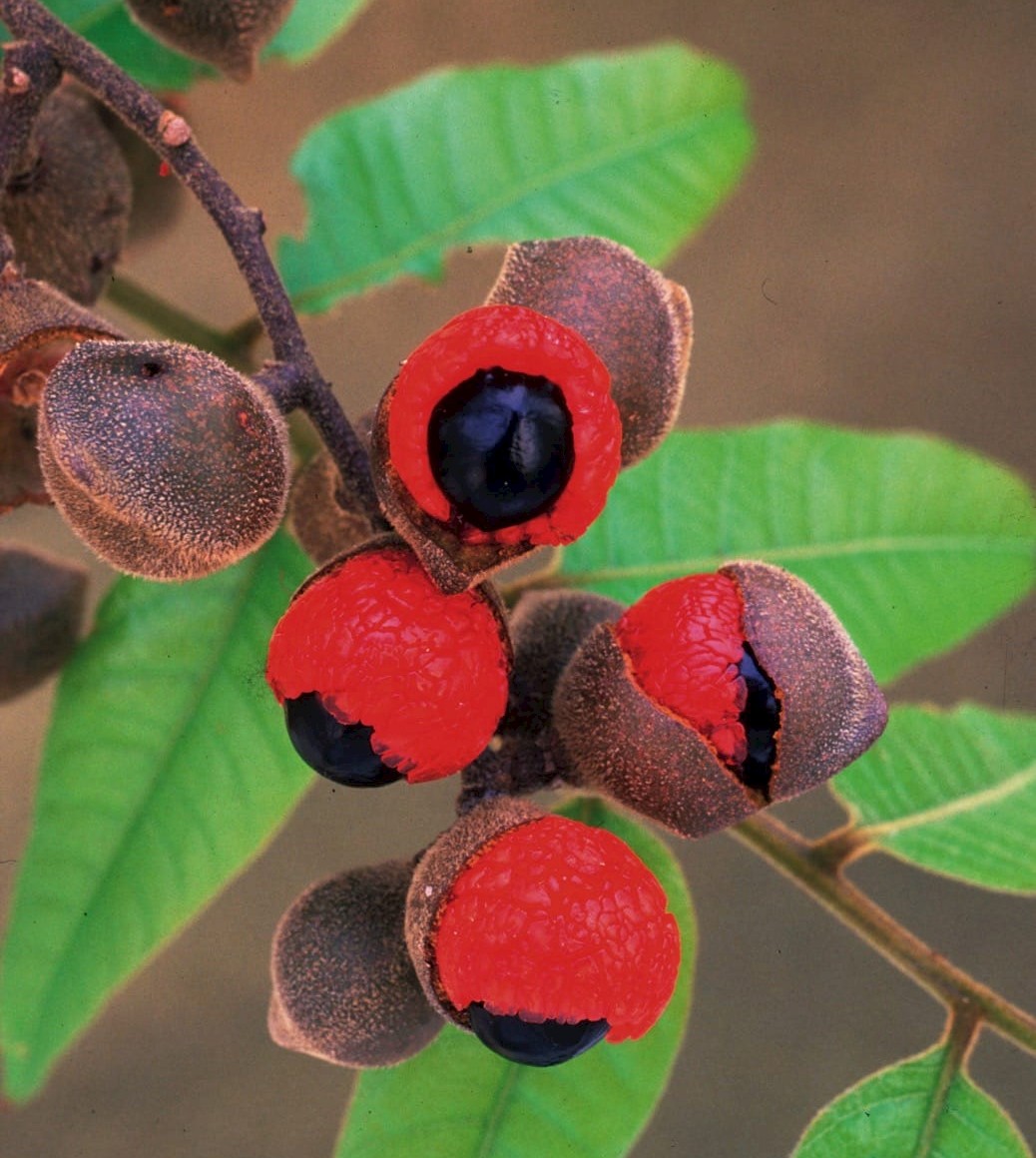Alectryon excelsus
Credits
Article from New Trees by John Grimshaw & Ross Bayton
Recommended citation
'Alectryon excelsus' from the website Trees and Shrubs Online (treesandshrubsonline.
Genus
Common Names
- New Zealand Oak
- Titoki
Other taxa in genus
Tree to 20 m, 0.6 m dbh; single- or multistemmed. Bark brown to black, mottled with white, lenticellate. Branchlets winged, densely covered in ferruginous hairs. Leaves alternate, imparipinnate, 8–26 × 10–17 cm; leaflets (three to) five (to seven) pairs, smooth not puckered, ovate to oblong or lanceolate, 5–10 × 2–5 cm, matt or shiny green with short hairs on the midrib and veins, margins entire to serrate or dentate, apex obtuse to acuminate; petiolules ~0.5 cm long; petiole ~8 cm long; newly emerging leaves rosy pink. Inflorescences paniculate, 9–30 cm long, densely pubescent. Flowers hermaphrodite or unisexual, 0.3–0.4 cm diameter, pedicels ~0.5 cm long; calyx lobes five, covered in silky hairs, petals absent, stamens five to eight, anthers purple, filaments hairy. Capsules sessile, woody, 1.5–2 × 1–1.4 cm, dehiscent, containing a single seed. Seed 0.7–0.9 × 0.6–0.8 cm, globose, partially enclosed in a scarlet, fleshy aril. Flowering November, fruiting December (New Zealand). Salmon 1980, de Lange et al. 1999. Distribution NEW ZEALAND: North Is. (usually within 100 km of coast) and South Is. (northeast coast). Habitat Lowland forest between 0 and 600 m asl. USDA Hardiness Zone 9. Conservation status Not evaluated. Illustration NT130. Cross-reference K129.
In New Zealand Alectryon excelsus is an important landscape tree, widely planted for the sake of its broad evergreen crown of handsome pinnate leaves, large inflorescences of purplish flowers, and bright red and black seeds. The leaves flush rosy pink and turn to mid-green, retaining some of the silky hairs found in many parts of the tree.
Titoki has been cultivated in the San Francisco Bay Area since at least 1893, when one was planted on the Stanford University campus by Dr David Starr Jordan (this tree has since been removed, but there are several descendants or replacements on the campus at the present time) (Bracewell 2005). It is also grown in other Bay Area gardens. Beyond this favourable enclave, it appears to be frequently grown only in Cornwall, where it is available from nurseries, with occasional appearances elsewhere, such as the 1.2 m specimen reported from Southend, Essex (Johnson 2007). No large specimens are known. Tom Hudson (pers. comm. 2006) reports that it is slow-growing and needs a certain maturity to be hardy. He recommends growing young plants on in warmth for some time before planting out. In New Zealand A. excelsus is a lowland plant, preferring fertile alluvial soils, but also growing on volcanic substrata (New Zealand Plant Conservation Network 2005a). In cultivation a fertile warm site is indicated.

